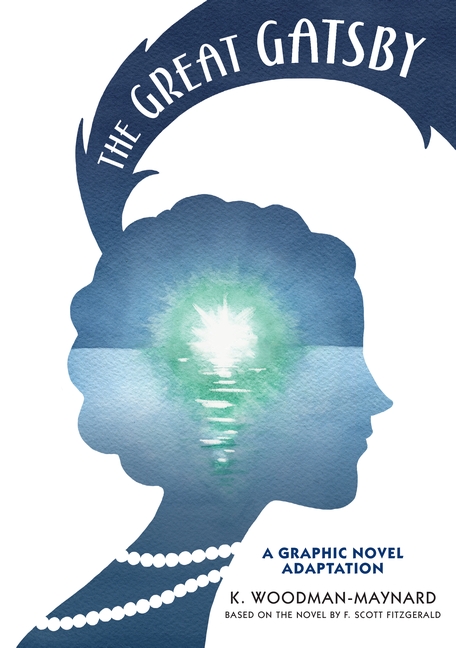Comic Book Review: The Great Gatsby adapted by K. Woodman-Maynard from the novel by F. Scott Fitzgerald
A decently long copyright term is a good thing. An author who wrote something cool in their youth can still be supported by it in their old age. The family of a creator taken too soon is not cut off from their legacy. But corporate interests have, in America, extended copyright protection to ludicrous lengths, which has kept much of the literature locked up well past a reasonable release date. For example, The Great Gatsby, published in 1925, has only very recently come into the public domain nearly a century later.

One of the fruits of that release is this graphic novel adaptation of the classic novel.
If, like me, you’ve never gotten around to reading the original, it might be helpful to recap the plot.
Our narrator is Nick Carraway, an upper-middle class guy from the Midwest who’s gone into the bond business and is having a modest success, sufficient to rent a house on the West Egg peninsula of Long Island. It’s early summer, and he goes to visit his second cousin Daisy and her husband Tom Buchanan (whose time at Yale overlapped with Nick’s, though they did not travel in the same circles there) who live in the much ritzier East Egg area. Tom, who comes from old money, peaked in college as a football player, and is at something of loose ends. He’s worried about “racial replacement” that’s he’s read about.
Back in West Egg, Nick discovers that the fancy mansion next door is owned by one Jay Gatsby, a millionaire with a mysterious past and a reputation for throwing the best parties. Jay tells a lot of stories, at least some of which are partially true, but he’s also definitely lying about many things, like his name.
It turns out Daisy and Jay share a past, and his party mansion is meant to lure his old flame so they can reconnect.
It ends in tears.
The art is airy, with watercolor-style coloring that in no way pretends to be realistic. The artist studied 1920s magazine illustrations to get the right styling, and uses visuals to convey Fitzgerald’s metaphors. I enjoyed it very much.
This adaptation takes advantage of Nick being an unreliable narrator (telling himself he’s the most honest man he knows) to shift a few details about, and soften the antisemitic stereotype of one of the supporting characters.
As for the story, its strength comes from the original novel, which is still studied today for good reason. The rich are not so different now from how they were back then, and a man consumed by the past will often come to a sad end.
Content note: suicide, racism, extramarital affairs, alcohol abuse (it’s Prohibition.) While not written for young adults, it should be okay for senior high readers on up.
Recommended for people who never got around to reading the book, as a gift for F. Scott Fitzgerald fans, and for high school students who might be assigned The Great Gatsby in class. (Don’t base your book report on this version though!)
Or perhaps, old sport, you’d prefer to watch a movie?

